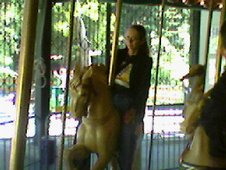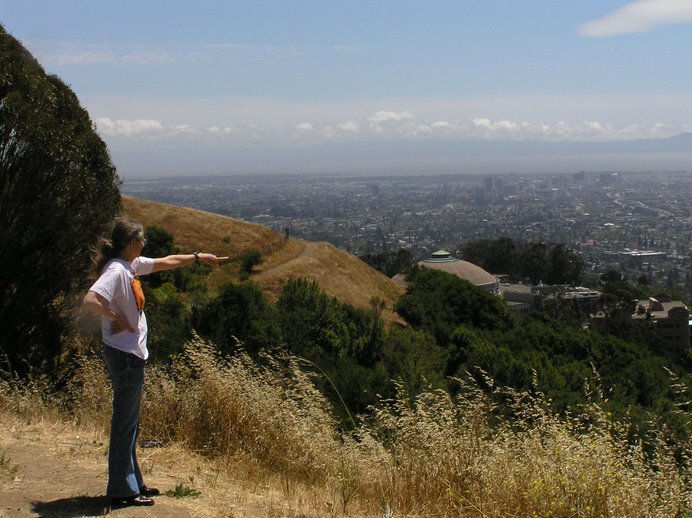
Sadness: When "Plant a Tree for Israel" goes awry
It always saddens me when I hear about the destruction of human life and property for no reason. And I have been completely saddened and dismayed to learn about all the horrible wildfires that are currently tearing through northern Israel unchecked. These out-of-control blazes have destroyed up to one-eighth of the entire state of Israel so far -- and with no end in sight. At last count, over 40 people have been killed and thousands more have been left homeless.
To me, it is particularly sad that the exact same trees that are now burning so intensely are the very same trees that were planted so many years ago during the extensive 1950s "Plant a Tree for Israel" campaign that allowed for the purchase of over 260 million trees. And each one of these trees may have been purchased with small, precious sums of money eagerly and hopefully donated by schoolboys and schoolgirls in America.
Each pine tree now in flames may have been purchased with some little boy's allowance that he had saved up for weeks, months or years, or with some little girl's birthday money or babysitting money or paper route money. (Hey, my sister had a paper route back in 1955 -- girls did that kind of stuff too -- just think of Rosie the Riveter!)
All these precious trees up in flames.
People and property needlessly destroyed.
This tragic loss also reminds me the tragic losses that have happened in southern Lebanon, Beirut, Jordan, Syria, the West Bank, Jenin, Hebron, Gaza, the Golan Heights, East Jerusalem, Iraq, Iran, Afghanistan and Manhattan.
It is always a sad tragedy and waste to humanity when people and property are needlessly destroyed.
PS: I just got an e-mail from an expert in that area to the effect that I was being way too subtle here and that although things certainly have gone awry in Israel/Palestine recently, things in that area actually began to go awry far earlier than this current wildfire situation.
"Things first began to go awry in that area when the very first 'Settler' killed the very first Palestinian solely for his or her land."
"And when was that?"
The expert who e-mailed me stated that this may have happened as far back as the 19th century -- long before even the beginnings of all that horribleness began occurring in 20th-century Germany.
PPS: Here's my account of having visited that area of northern Israel back in 2006:
Today we drove up into northern Israel, to see the remains of a Palestinian village that had been destroyed by the Israeli army approximately 60 years ago. As we drove along the freeway toward the Lebanese border, we passed a McDonalds sign. And a sign for KFC. It reminded me of when I used to take my children on trips. They would see a McDonalds and say, "Are we there yet?"
Finally we arrived in a relatively large Israeli city near the Lebanon border. Mostly it seemed to consist of miles and miles of strip malls. The best of American architecture! I felt right at home. Then we drove out through the countryside on the far side of the city and then up into the mountains, finally arriving at a hilltop somewhere near the Lebanese border. Lots of trees. Nice view. "Oh, look! There's a cow." There was a bunch of cows.
We arrived at the site of the former Palestinian village, apparently one of 450 Palestinian villages destroyed at the time. But I couldn't see nothing but trees and grass and cows.
"Some of the original inhabitants of the village will be meeting us here," said the Israeli man I had driven up with. He, like many other Israelis, strongly objected to the drunken use of force by the IDF and he, like many other Israelis, has made a point of learning some of the true history of what had gone on way back then. When he had offered to bring me here, I had jumped at the chance.
"This is one of over 500 Palestinian villages that were destroyed by the Israeli army back around 1948-49." Wow. They certainly did a good job on this one! There was nothing left but stones -- and cows.
"All record of what the Palestinians call the Nakba -- the catastrophe -- are absent from Israeli school curricula, from most history and geography books and even from maps of Israel itself. The sites of the old Palestinian villages have even been erased and re-named on all of the maps. And even today there is no official Israeli recognition or commemoration -- let alone apology -- for the Nakba."
We got out and walked around the land where the village used to be. There was nothing left. Just a lot of scattered stones. Another bunch of cows appeared as we walked down a dirt road. Photo op! Except that these cows had horns. Big horns. Lots of horns.
"In the Zionist collective memory," continued my Israeli friend, "the Palestine of 1948 was a 'A land without people for a people without a land'. Yet the place where Israel was founded was never empty. This was home to almost one million Palestinians living in over 700 villages and cities, most of which were depopulated and re-named in the period during and immediately following 1948." Now all there was here was cows. And cow poop. Opps.
It was a peaceful afternoon in the country. We walked up the path to the top of another hill. Terrific view -- almost like the Sierra foothills near Auburn and the California gold rush country up before you get to Lake Tahoe. "Here is an old fortress that was bombed by the Israeli air force back in 1949. 99% of the houses were still standing in 1950 but the Israeli army returned and blew up everything that was left. You are now standing on the site of the elementary school and the high school. The village used to make its living by growing bees and harvesting honey." Not any more. Nothing was left. It looked like even the bees had left town.
"And here is the Muslim cemetery and across the road is the Christian cemetery, dating back from the time of the Crusades." Now a small stone building was all that was left. "It used to be the minister's home. For hundreds of years, Muslims and Christians had lived -- mostly -- in peace in this village. And over there was the village pool and the village green."
On that day in 1950 when the rest of the villagers had been driven away by the occupying Israeli army, one family had been down in the fields during the seizure and occupation of the village. "When they came back and one of their boys had a wound that he had gotten while farming, the Israeli soldiers said that it must have come from resisting the invasion so the soldiers tortured him and killed him. His parents were too scared to even come out of the trees in order to collect his body. The rest of the surviving villagers had run and hidden in their olive orchards but after a few days without food, two old men went back to the village to try to get supplies from their homes. They were shot."
The Israeli army wanted to hide any evidence of destroying the village. "But they were stupid. They left all the stones."
Then somehow we got into a discussion of eye-wear and I gave someone with me my famous "glasses as accessories" speech. "Nobody manufactures yellow glasses," I lamented. "Do I have to do everything myself? Now I have to manufacture glasses too?"
Then we toddled off to what was left of the village church. I met an Arab-Israeli man there who was also touring the ruins and he told me his story. "My grandfather was a Palestinian and he had a very high regard for education. When I was a boy, he made each of his grandchildren learn a different language. Unfortunately I got stuck learning English," he joked. "The others learned French, German, Spanish and Chinese." Chinese? "Yes but unfortunately the only textbook he had was Chinese to English so he was forced to learn English too."
Apparently when the Israeli soldiers stormed the village back in 1950, they confronted the headman, who was a Christian. "Why are you defending these Muslims," the Israeli commander asked and the headman answered that, "in this one moment, we now are all belonging to the same religion -- and it is God, not us, who will sort out who is good and who is bad."
The air today smelled of pine trees. There were stone blocks everywhere. Thousands of them. One of the villagers who had survived the massacre and who had come back for the day spoke to us. "Every year since the Nakba, those of us who are left feel so empty inside. The horrible violence seemed so senseless. It has split our bodies and minds. Our bodies stand here 57 years later but our souls are still back in our village, so long ago, in this beautiful place. And no matter what the Israeli history books say, this village did once exist." That man survived. And he remembers.
"We thought at first that we might be allowed to come back to our village," said the man. Who could blame him. This place was -- and is -- beautiful. "Other villages took us in but then they too were destroyed. But we will never give up our dream of someday coming back here, back to our home."
Apparently after 1950, this village was declared to be a "military area" and so the villagers were never allowed to return. And even today, even with all the trees and the cows, this village is still labeled a "military zone". The sun was beginning to set so we walked back to our car and drove back to Tel Aviv. And we didn't stop by McDonalds for dinner on the way back.

